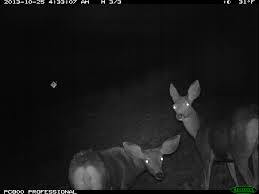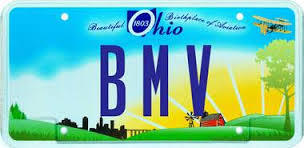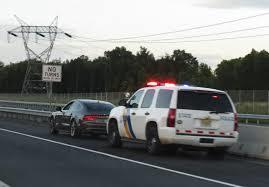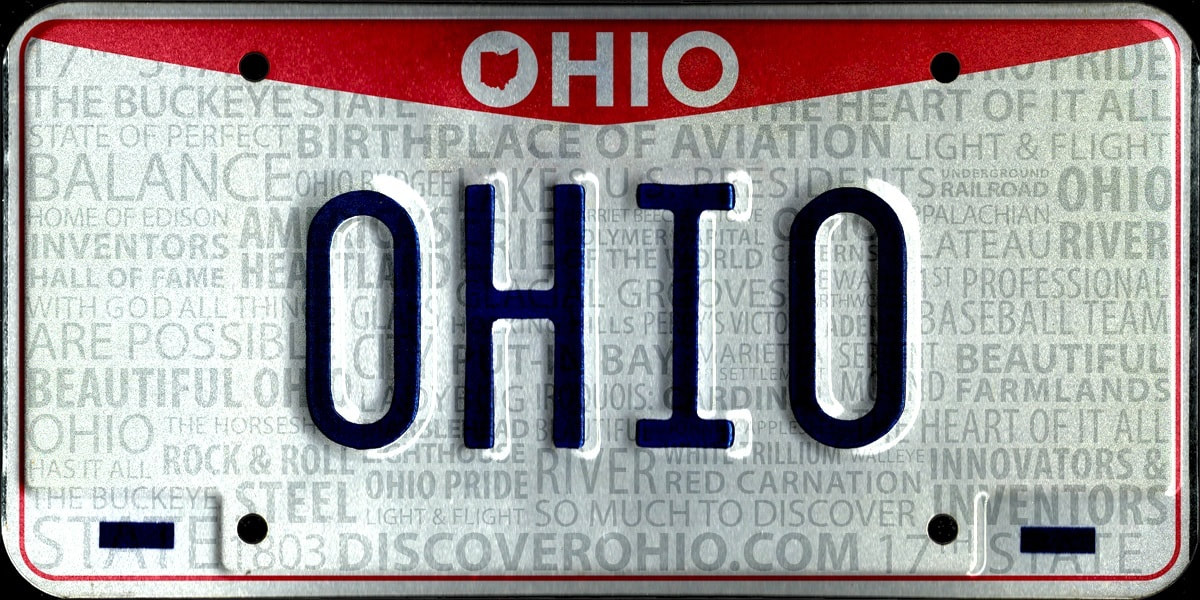 Autumn is the peak season for collisions involving vehicles and deer. Deer migration and mating season generally runs from October through December. Add that along with hunting season and they cause a dramatic increase in the movement of the deer population. As a result, more deer-vehicle collisions occur in this period than at any other time of the year. During this three month period the odds of you hitting a deer doubles, and for the month of November, it triples. Auto insurance claims involving deer spike just the same. Thus there's no better time to review your auto insurance coverage than now to see how well you are covered (if at all) in case you hit a deer. Comprehensive coverage is the part of auto insurance that covers your vehicle in case you were to hit a deer. When that happens, comprehensive coverage will pay for the damage up to the value of the vehicle minus whatever deductible you're carrying. One thing that many drivers do during this period is add comprehensive coverage. Those who already have comprehensive coverage on their vehicle can also increase coverage by lowering their comprehensive deductible. Many people feel it's a good idea to carry comprehensive coverage in the fall months (or better their coverage by lowering deductible), and then change the coverage back again in January, when the risk of hitting deer goes back down. Let's look at some Deer – Vehicle Statistics
Cost of adding or increasing comprehensive coverage This is the part that may surprise you. If you're not already carrying both comprehensive and collision coverage, chances are that you are driving an older vehicle. Most companies will allow you to have comprehensive coverage without carrying collision coverage. So by only adding comprehensive coverage without collision coverage, the premium isn't nearly as high as having both coverages.... Many vehicles will only increase ten dollars or less per month by only adding comprehensive coverage. However, there is a downside to this strategy, see next paragraph. Quick word on deer collisions and collision coverage As I've mentioned before, when you hit a deer it is not filed under collision coverage. It is filed under comprehensive coverage..... However, if you swerve to miss a deer and hit something else then it falls under collision coverage. So if a deer or any other animal causes you to run off the road and hit something else, Not only will that fall under collision coverage, but one car collision claims will also go on your driving record is an at fault accident. Something to keep in mind. Summary: Increasing auto insurance coverage protection against deer collisions As mentioned before it is very easy to adjust your auto insurance coverage at any time. What you'll need to do to protect yourself against deer is add comprehensive coverage, if you don't already have it. If you are already carrying comprehensive coverage, you can also lower your deductible during peak deer season.This would lower your out of pocket expense if you were to hit a deer. Another part of your policy that you would want to check on is medical payments coverage in case you or any of your passengers get injured from a deer accident. You can either add medical payments coverage to your policy if you don't already have it. If you do already have medical payments coverage, you may want to look into increasing that coverage. See how much more that would cost for the next higher level and the level above that and compare the prices. You may decide it is worth increasing coverage. If you would like me to run an auto insurance quote for you, simply click on the link below. Then click on the state you reside in. And as always, I handle all quotes personally and privately. Get an Auto Insurance quote with Lyles Insurance Call me for a Quote Related Blog Articles: Video: Guide for correcting invalid VIN numbers Video: Should I carry Comprehensive & Collision on my Auto Insurance?
0 Comments
 Most people are not familiar with the term Broad Form Named Driver Auto Insurance. It is a special type of auto insurance policy that can be beneficial for many people. However, a Broad Form Named Driver policy (BFND) isn't available in many states. Of the six states I work in, only Ohio has BFND policies. While these policies may be ideal for some people, they won't work at all for others. So before you take out a broad form name driver policy, you need to understand exactly how the policy works and decide whether or not it will work for you.
If any of the above scenarios apply to you, then you may want to consider a broad form name driver auto insurance policy. However, a Broad Form Named Driver has some serious drawbacks as well: Cons & drawbacks of a Broad Form Named Driver policy:
As long as you fully aware of the limitations above and don't have a problem with the shortcomings of a BFND policy, then I will be happy to run a quote for you. Simply click on the link below. And as always, I run all quotes personally and privately. Get an Ohio Broad Form Named Driver Policy quote with Lyles Insurance Call me for a Quote Related Blog Articles: Differences Between an Ohio Financial Responsibility Bond and a Named Operator Auto Insurance Policy Understanding named operator (non-owner) auto insurance policies and how to get the best rate  There are a lot of older vehicles whose value is not high enough to make it worth carrying comprehensive and collision coverage, which is what actually covers the vehicle you're driving. However, as it is in almost every state, you are required to carry at least the state minimum liability auto insurance coverage to drive legally. You may not understand the terms and the numbers when selecting the amount of liability coverage you wish to carry. This article is to help eliminate that confusion, and let you understand exactly what you need to know as far as coverage is concerned. First of all what is liability auto insurance coverage? Liability covers you if you're at fault in an accident in which you caused injuries and/or property damage to others as a result. The bodily injury part of liability coverage takes care of the injuries and the property damage coverage takes care of the property damage. Both pay up to the limits you choose to carry. Understanding what the numbers mean with liability coverage There are two ways a company may offer liability coverage. The most common way is split limits. Some companies also offer combined single limits liability coverage. Let me explain both. Split Limits Coverage: With companies that offer split limits liability coverage, you will see those levels of coverage expressed in terms of three numbers. Common examples would be 25/50/25 (which Is Ohio's state minimum, 50/100/50, 100/300/100, 250/500/250. Let's break down what those numbers mean:
So for example, if you have 100/300/100 in liability coverage: $100,000 is the most this policy will pay for any one person's injury $300,000 is the maximum this policy will pay for all injuries, and $100,000 is the maximum this policy would pay for property damage. Combined single limits coverage: With combined single limits coverage the body injury and the property damage are all combined together and the total amount that this policy will pay for Liability (both injuries and property damage) is expressed as one grand total. So if you have a liability policy with a combined single limit of 500, this means that your policy will pay up to a half million in total liability for body injury and property damage. Other key points about state minimum liability coverage that you need to know:
Get an Ohio Auto Insurance Quote with Lyles Insurance Call me for a Quote Related Blog Articles: Video: Understanding your auto insurance declaration page Video: 10 Most common Auto Insurance Myths/Lies you hear people say Video: Ohio BMV Random Letter Auto Insurance Check Top 10 Ohio counties the State Highway Patrol cracks down the most & least on DUI’s 10 Keys to Buying Auto Insurance in the Portsmouth Ohio area with a bad driving record Out of State SR22 Auto Insurance Filing: Living in one state and needing an SR22 filing in another9/13/2016  If you live in one state and need an SR22 auto insurance filing in another state to get your license back, you may have found out that finding the right auto insurance coverage with the SR22 filing you need at an affordable price can be a real pain! There are two main reasons for this: First, not all auto insurance companies offer SR22 auto insurance filings. Second, there are quite a few states that don't even have SR22 filings. So finding an auto insurance company that will sell a policy with an out-of-state SR22 filing attached to it can be even tougher to find. However, if you're currently living in the states of Ohio, Indiana, Michigan, Pennsylvania, Virginia or West Virginia, I may be able to help you. It doesn't matter which state you need the SR22 in.... as long as you currently reside in one of the above states, I might be able to help you. But first, you need to know the basics of an SR22 auto insurance filing so that you know what type of coverage to buy. You will also learn what levels of coverage you need to satisfy your SR22 requirement. Let's start with the SR22 itself: What is an SR22 auto insurance filing?
What level of coverage do I need to carry? This answer depends on both the state you're currently living in and the state that you need the SR22 filing in. You need to look up both states' minimum auto insurance liability coverage requirements. If you need help, any auto insurance agent would be happy to look those up for you. Whichever of the two states has the higher state minimum requirement, that's the minimum level of coverage that you need to carry. Of course, I recommend you choose higher levels of liability coverage than that. But that is the minimum coverage you will need to get your license back. Is it ok to carry two separate auto insurance policies, one in the state I need the SR22 in, and the other in the state I live and drive in? Yes, it is ok to do that. However, it is usually more expensive than simply combining them both on one policy. I have seen some unique circumstances where it was cheaper for drivers to carry two separate policies. But this is very rare because you're needlessly buying two policies instead of just one.... More often than 9 out of 10 times, it is cheaper to combine them together on one policy. What about drivers who need an SR22 filing but don't own a vehicle? For drivers who need an SR22 filing but do not own a vehicle, you will need to attach your SR22 filing onto a special type of auto insurance policy. The special type of policy that you need depends on the state that you're living in. If you live in the state of Indiana, Michigan, Pennsylvania, Virginia or West Virginia, you can apply the same SR22 filing on what is called a named operators auto insurance policy (also known as a non owners policy). In Ohio, someone who doesn't own a vehicle can apply the SR22 filing onto any of three types of policies: a financial responsibility bond, a named operators policy, or a broad formed name drivers policy. All three types are similar but have their differences. An auto insurance agent will be happy to explain those options to you. Finding the best price for SR22 auto insurance coverage. Your best bet in finding the lowest rate for SR22 coverage is to contact an independent insurance agent who specializes in SR22 auto insurance (also known as high risk auto insurance). They will usually have several companies that will compete for your business. What's even better is that they will do the shopping around for you, instead of having you to shop around one company at a time. This is the most efficient and effective way to find the lowest rate. If you would like for me to run you an SR22 auto insurance quote, I will be happy to find you the lowest rate I have to offer. Click on the appropriate link below: Get an SR22 Auto Insurance Quote with Lyles Insurance here if you own a vehicle. Get an SR22 Auto Insurance Quote with Lyles Insurance here if you Do Not own a vehicle. Call me for a Quote Related Blog Articles: Video: Auto Insurance for Drivers Who Don't Own a Vehicle Video: Out of State SR22 Auto Insurance Filings Where can I buy an out-of-state SR22 auto insurance filing? |
Author
Dan Lyles is an Independent Insurance Agent serving Ohio, Indiana, Michigan, Pennsylvania, Virginia and West Virginia.. Archives
March 2021
Categories
All
|



 RSS Feed
RSS Feed